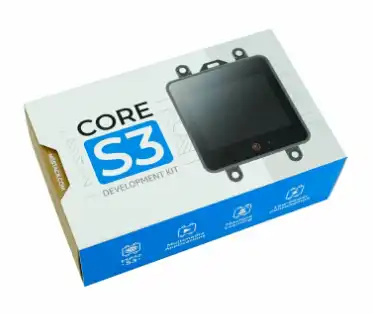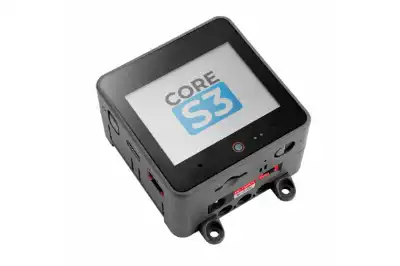M5Stack has today launched the third generation of its Core family development kits, called Core S3. A new version that stands out for the large number of peripherals it mounts.
Traditionally, the Core series is the flagship of the manufacturer M5Stack, aimed at DIY applications, IoT project development, industrial automation, and home automation.
On this occasion, the renewed Core S3 model comes with an ESP32-S3 processor with dual-core Xtensa LX7, and a frequency of 240Mhz. This is accompanied by 512 KB of SRAM memory, 16MB of Flash, and 8MB of PSRAM.
In terms of connectivity, the ESP32-S3 provides the usual 2.4 GHz WiFi wireless connection, 802.11 b/g/n, and Bluetooth 5 (BLE). Something we are already used to in the Espressif processor family.
One of the strongest points of the Core series has always been the integration of multiple peripherals in a single device. M5Stack has taken this philosophy to another level.
The CoreS3 has a 2.0-inch IPS screen with a resolution of 320x240 pixels, a resistant glass panel, and a capacitive touch panel. Similar in characteristics to what we found in the previous Core 2 model.
In addition, it has a 480x640 pixel (0.3 MPx) GC0308 camera and LTR-553ALS-WA proximity sensor. Both are a novelty within the Core series and can be very useful when integrating them into our projects.
In terms of sound, it has a 16-bit high-fidelity I2S amplifier AW88298 and a 1W speaker integrated into the housing. For sound input, it uses a dual microphone along with an ES7210 audio encoding chip.

The internal IMU has also been improved, becoming a 6-axis BMI270 sensor. They have added a BMM150 magnetometer to this, a very important improvement (and one that I was looking forward to) when making robots.
The M5Stack Core S3 also has a BM8563 real-time clock to provide accurate time measurement and a sleep timer alarm function.
The internal battery has been increased to 500mA. On the other hand, by default, it comes with a DIN rail mounting base, which incorporates a power connector compatible with voltages from 9V to 24V.
On the other hand, the CoreS3 uses an AXP2101 power management integrated circuit and a 4-way power flow control circuit, making it suitable for applications where low power consumption is required.
It also has a slot for a TF card (microSD), a TYPE-C port for program download, and supports OTG and CDC functions to facilitate connection with external USB devices.
And the truth is, I don’t even know how many times I’ve used “also” and “in addition” in the article, because as you can see, the new Core S3 is loaded with peripherals. They have put everything in it.
Here is a summary of the features,
- MCU Espressif Systems ESP32-S3 Dual-Core 32-bit Xtensa LX7 @240MHz
- Memory 512KB SRAM and 8MB PSRAM
- Flash 16MB FLASH
- WiFi 2.4 GHz, 802.11 b/g/n
- Bluetooth 5 (BLE)
- 2.0” IPS touch screen @320*240
- Capacitive touch panel ILI9342C
- Camera 480x640px GC0308
- Proximity sensor LTR-553ALS-WA
- 6-axis BMI270 IMU + BMM150 magnetometer
- 1W speaker with AW88298 amplifier
- Dual microphone with ES7210 encoding chip
- RTC BM8563
- Power management chip AXP2101
- Size 54 x 54 x 16mm
- Weight 73.3g
The M5Stack Core S3 is priced at $60. Which, personally, I think is a very good price considering the specifications it has, and the huge number of peripherals it mounts.
More information about the new M5Stack model, as well as product documentation, can be found on the manufacturer’s website at https://docs.m5stack.com/en/core/CoreS3
